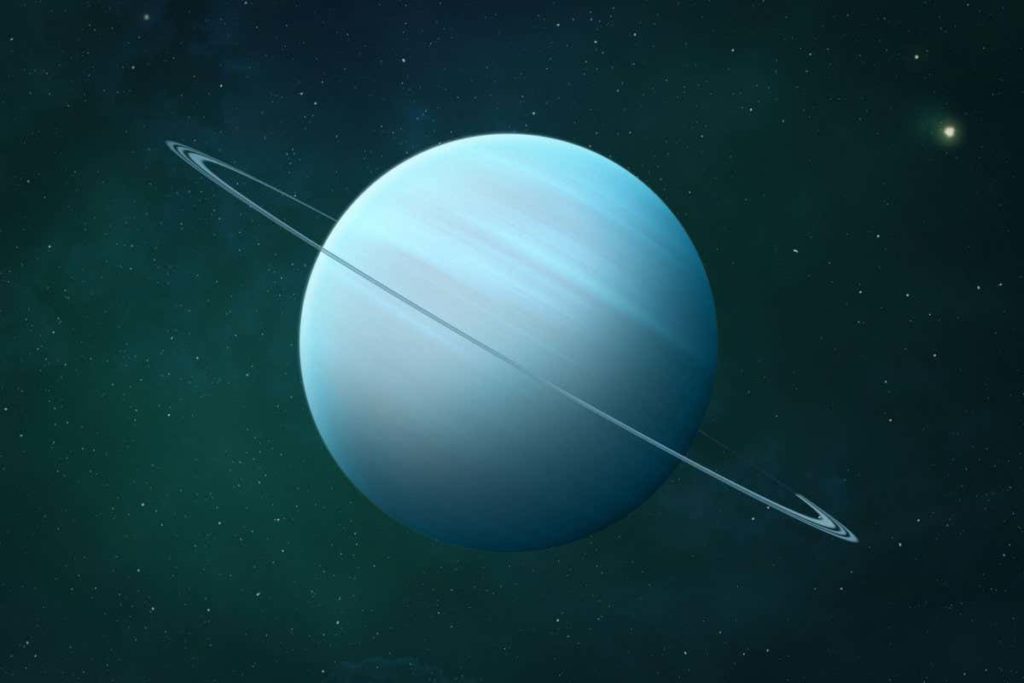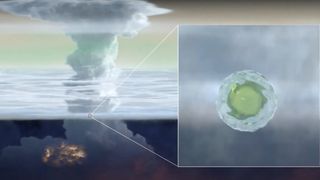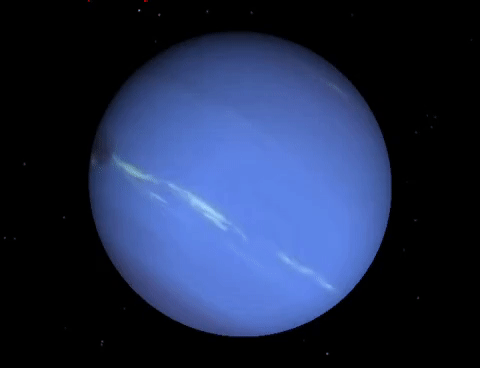Stinky ‘mushball’ hailstones on Uranus may explain an atmospheric anomaly there (and on Neptune, too).
The following written content by Tereza Pultarova
There’s no good reason why ammonia shouldn’t be present at Uranus and Neptune.

A recent discovery of giant ammonia-rich hailstones, dubbed mushballs, on Jupiter might explain why Uranus and Neptune seem to have no ammonia in their atmospheres.
Scientists have puzzled for years over the apparent absence of ammonia in the atmospheres of Uranus and Neptune.
Known for its unpleasant smell, ammonia is rather common in the universe. Since the atmospheres of Uranus and Neptune are rich in other chemical compounds known to be present in the primordial cloud from which planets formed, scientists had no good explanation for ammonia’s absence in the ice giants’ air.

However, a recent discovery of giant ammonia-rich hailstones on Jupiter might shed some light on this mystery. Spoiler alert! The ammonia might not be missing at all; it may just be hidden in deeper layers of the planets’ atmospheres, where current scientific instruments cannot reach.
A possible key to solving this mystery was provided by NASA’s Juno mission, which is currently orbiting Jupiter.
“The Juno spacecraft has shown that in Jupiter, ammonia is present in abundance, but generally much deeper [in the atmosphere] than expected,” Tristan Guillot, a researcher at the French National Centre for Scientific Research (CNRS) in Nice, said in a statement.
A study published last year in the journal Nature found that mushballs containing ammonia form high in the atmosphere of Jupiter during thunderstorms thanks to ammonia’s ability to melt ice into liquid water even in extremely cold temperatures of around minus 162 degrees Fahrenheit (minus 90 degrees Celsius).
As these mushballs fall through the atmosphere, they absorb more and more ammonia, eventually accumulating up to 2.2 pounds (1 kilogram) of mass. The ammonia gets transported deep into the atmosphere, where it remains locked below the cloud base.
“What we have learned at Jupiter can be applied to provide a plausible solution to this mystery at Uranus and Neptune,” said Guillot, who presented his theory at Europlanet Science Congress (EPSC) 2021, which was held virtually this year from Sept. 13 to Sept. 24.
“Thermodynamic chemistry implies that this process is even more efficient in Uranus and Neptune, and the mushball seed region is extended and occurs at greater depths,” Guillot added.
That means that, just like on Jupiter, on Uranus and Neptune ammonia may be simply hidden deep in the atmosphere. Scientists currently measure the atmospheric composition of these distant planets of the solar system by analyzing the infrared and radio signatures of the atmospheres by Earth-based telescopes. Read more from Space.
Here’s another interesting video: How do you wash your hair in space?





